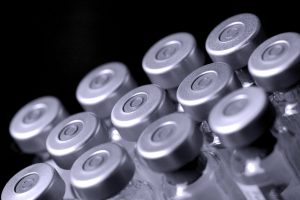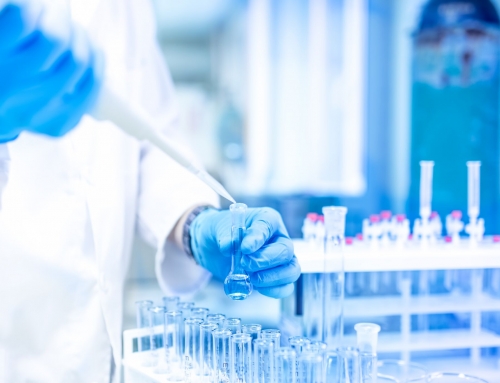The lyophilization cycle is a key component in the manufacturing process of many pharmaceutical products. Understanding lyophilization requires a basic understanding of sublimation—the process by which a solid transitions directly to a vapor or gaseous state without first passing through a liquid phase.
Sublimation is part of the lyophilization cycle, during which ice or other frozen solvents are removed from the desired material. Desorption is the process by which bound water molecules are removed. Both play a role in lyophilization, in which a frozen product is placed in a vacuum where pressure is reduced to below the triple point of water and then subjected to heat energy to cause the sublimation of water and other frozen solvents.
The key to proper lyophilization is to remove the solvent from the product without subjecting it to the kind of intense heat that might break the product down or otherwise damage or alter its molecular structure. However, achieving optimal lyophilization requires an extensive understanding of the process itself as well as the active pharmaceutical ingredient within the product that is undergoing lyophilization.
What are the benefits of the lyophilization cycle to pharmaceutical manufacturing?
 Today, roughly 25 percent of injectable drugs and biological products are lyophilized, while others such as proteins, peptides, and vaccines are stored in lyophilized form in order to obtain greater shelf stability. Most drugs have to be shelf stable for at least two years, while some require even longer shelf lives.
Today, roughly 25 percent of injectable drugs and biological products are lyophilized, while others such as proteins, peptides, and vaccines are stored in lyophilized form in order to obtain greater shelf stability. Most drugs have to be shelf stable for at least two years, while some require even longer shelf lives.
Besides pharmaceuticals, lyophilization is used in manufacturing coffee, ice cream, and any number of dried food products. Freeze-drying has even been used to recover water-damaged books and other documents.
What drives the nearly $3 billion lyophilization industry? One of the primary selling points of the lyophilization cycle is the enhanced stability of products in a dry state. In addition to a longer shelf life, lyophilized products are less likely to spill and easier to handle.
The lyophilization cycle allows products to be rendered into a more stable form without adding extreme heat which might damage the structure or function of the product. Product can then be reconstituted on-site relatively easily. Hence, lyophilized vials have become the method of choice for storing many different injectable drugs and biological products across the industry.
What are the primary steps of the lyophilization cycle?
 The FDA identifies three “separate, unique, and interdependent processes” within the lyophilization cycle: freezing, primary drying or sublimation and secondary drying or desorption. Most manufacturers who work with lyophilization add a fourth step, prior to the last two, in which a vacuum process is used to reduce the pressure within the lyophilizer to below the triple point of water.
The FDA identifies three “separate, unique, and interdependent processes” within the lyophilization cycle: freezing, primary drying or sublimation and secondary drying or desorption. Most manufacturers who work with lyophilization add a fourth step, prior to the last two, in which a vacuum process is used to reduce the pressure within the lyophilizer to below the triple point of water.
However, anyone who has worked within the lyophilization cycle knows that it is more complex than these three or four fairly straightforward steps. Before the product can be loaded into the lyophilizer, it requires formulation and pretreatment to ensure that it is ready for the process.
Proper loading is essential to ensuring that the process goes as intended, and once the lyophilization cycle is complete products in vials should be backfilled and stoppered under partial vacuum conditions before the product is finally removed from the lyophilizer.
If any stage of the lyophilization cycle is skipped or is incorrectly completed, it can throw off the entire process. Product that is not adequately frozen before being exposed to vacuum pressure, for example, can expand beyond its container, which not only invalidates that batch, but may require the entire lyophilization process be shut down so that the lyophilizer can be properly cleaned.
What other considerations affect the lyophilization cycle?
 For many CMOs, the basics of the lyophilization cycle are relatively straightforward. But, like any pharmaceutical process, lyophilization is affected by nuances that may not be apparent at first glance.
For many CMOs, the basics of the lyophilization cycle are relatively straightforward. But, like any pharmaceutical process, lyophilization is affected by nuances that may not be apparent at first glance.
Optimizing the lyophilization process requires a thorough understanding of the API of the product undergoing lyophilization—this includes moisture load, particle size, density, viscosity, solubility, and other factors. Knowing how the product will behave during lyophilization is essential to obtaining the correct final result and avoiding costly or time-consuming errors during the process.
It is also important to understand how the lyophilization cycle fits into the overall project cycle of the product itself. If lyophilization is being performed for parenteral products that are going to hospitals to be administered, the process parameters may be different than for products intended for clinical research. Understanding the total cycle of the product helps to anticipate needs in the supply chain and avoid slowdowns.
Ultimately, different products in different phases of development have different needs when it comes to lyophilization. Optimizing the lyophilization cycle for a specific product means understanding not only the cycle itself, but that product, and how the two interact.






